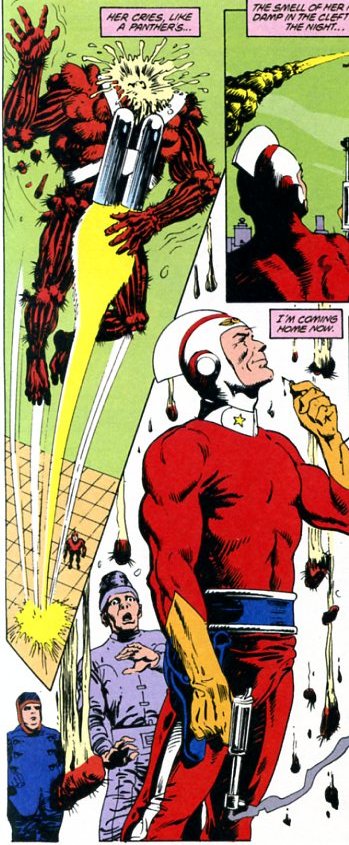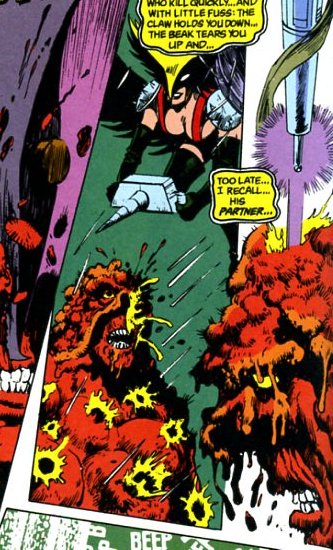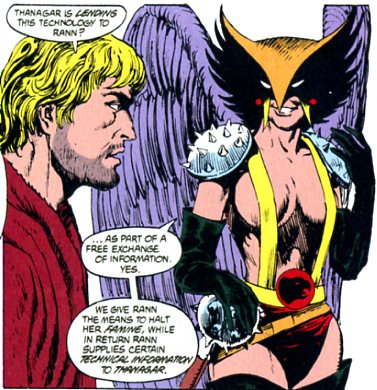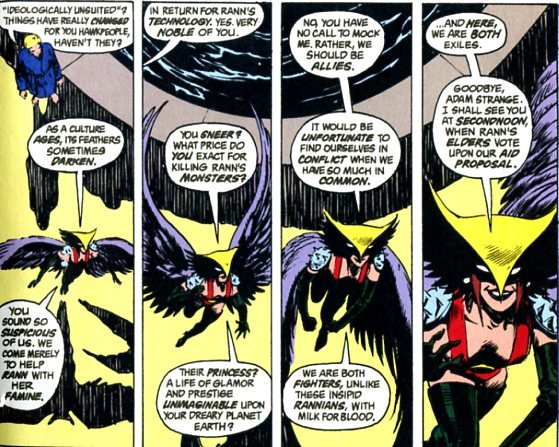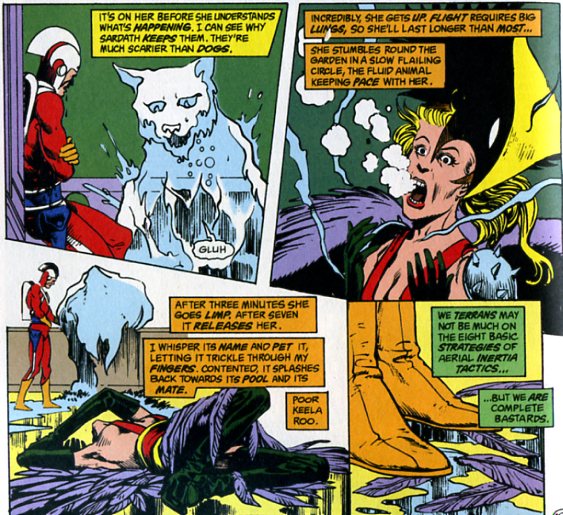On HU
We started the week with some Mary Sue links by Vom Marlowe.
I had another Swamp Thing post about gender and hawk women.
Suat had a lovely tribute to one of Tony Millionaire’s Sock Monkey stories.
We highlighted some comments on the Swamp Thing roundtable from Andrei Molotiu, Charles Reece, and EricB.
I sneered at Kingyo Used Books.
We announced four (count ’em, four!) new columnists on HU.
And we’ve got some black and doom metal for download.
HU….Live!
You can hear audio of the C2E2 comics journalism panel in which I participated.
There’s also commentary on the panel by Matthew Brady; Johanna Draper Carlson, Michael May, and Heidi at the Beat.
Utilitarians Everywhere
I have an interview about copyright issues with songwriter Bill Ritchie over at Splice Today.
Bill: As it happens, there’s a silver lining to my problems with getting paid. I can always trump someone who’s ranting away about how downloading is stealing, it’s wrong, it’s immoral, all that stuff because I can always point out that even if downloading were theft (which it isn’t, it’s copyright infringement), it sure wouldn’t be me any downloaders were stealing from if they copied thus-and-such a song because I don’t get paid for the sales of the record it’s on anyway, somebody else has got the money. So, “Whom are you defending?” is a question that I’m happy to be able to raise in that sort of discussion, because I just want to put it out there to people that this isn’t all cut-and-dried. I’m a music rights holder and I’m fine with downloaders, and not okay with the hyper-righteous criticism of them, because, hey, I’m out actual dollars that were already paid for my work, so why are we sitting around debating whether or not someone who downloaded represents a potential lost sale for someone who’s not me anyway, right?
Also on Splice Today, I review the new Merle Haggard album.
Haggard had a lot of hits besides “Okie from Muskogee,” and as a singer, guitarist, and songwriter he remains hugely important, a major influence on everyone from George Strait to Alan Jackson. Still, “Okie” was a telling moment. Even though somewhat tongue in cheek (white lightnin’ is every bit as illegal as marijuana, after all) it was still a line in the sand. And though Haggard has recorded with Willie Nelson and was idolized by Gram Parsons, that line hasn’t ever really disappeared. Over the years, he’s added strings at various points, but he’s never put together a New Age album with Daniel Lanois, or written with Jack White, or recorded a cover version of a Trent Reznor song. His latest album title, I Am What I Am, pretty much sums it up. And what Haggard is, is country or bust. He doesn’t have an alternative career path.
I have a couple really mean-spirited short book reviews at the Chicago Reader (you need to scroll a bit to find them.)
And a review of death-doom band Hooded Menace at Madeloud.
Other Links
In response to our own Richard Cook’s question, Can Comics Be Scary?, Curt Purcell put together an all star panel, including Sean T. Collins and Richard Sala(!) Check it out.
I’d seen this letter before, but it remains a truly transcendent example of snark.



